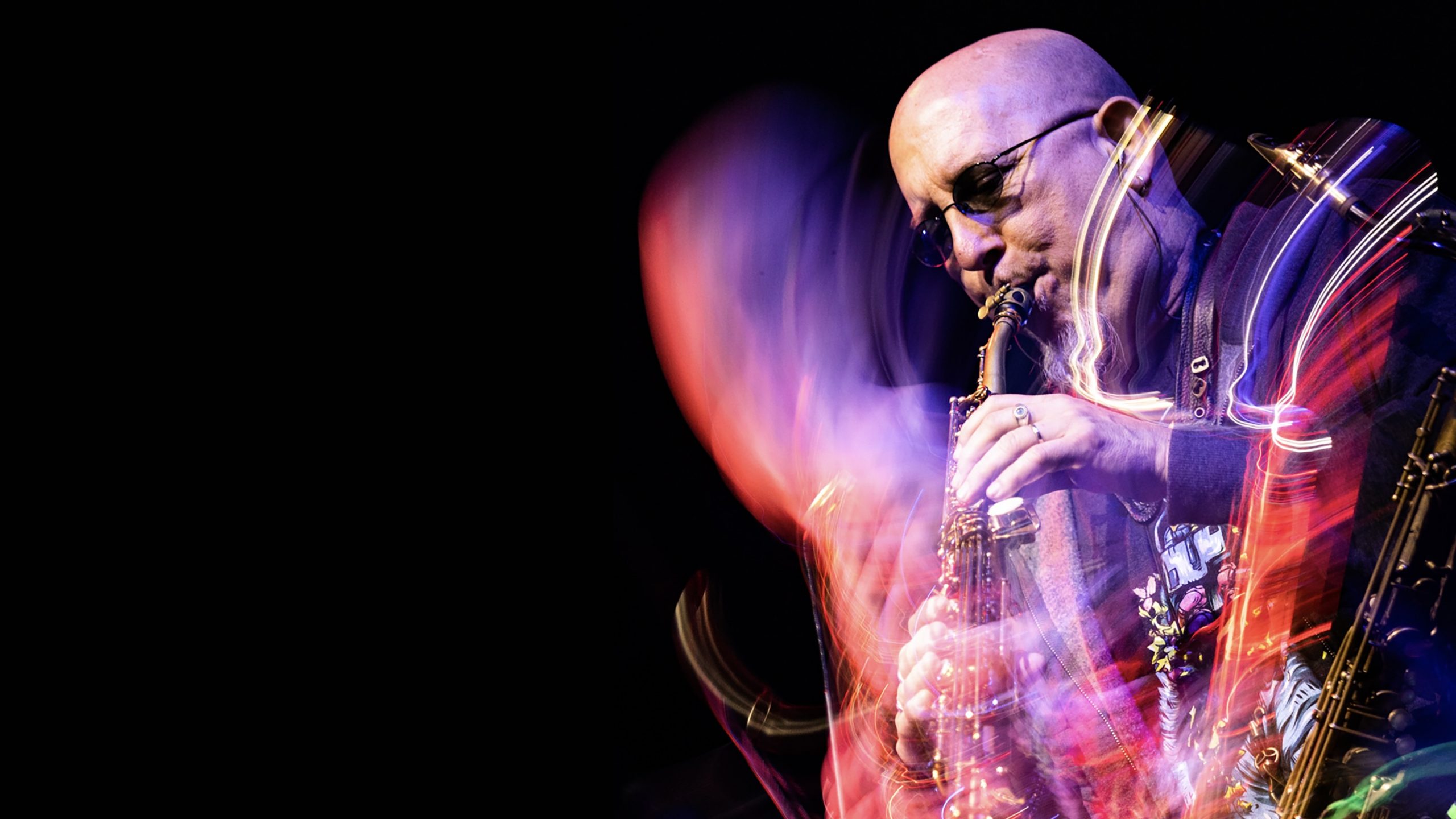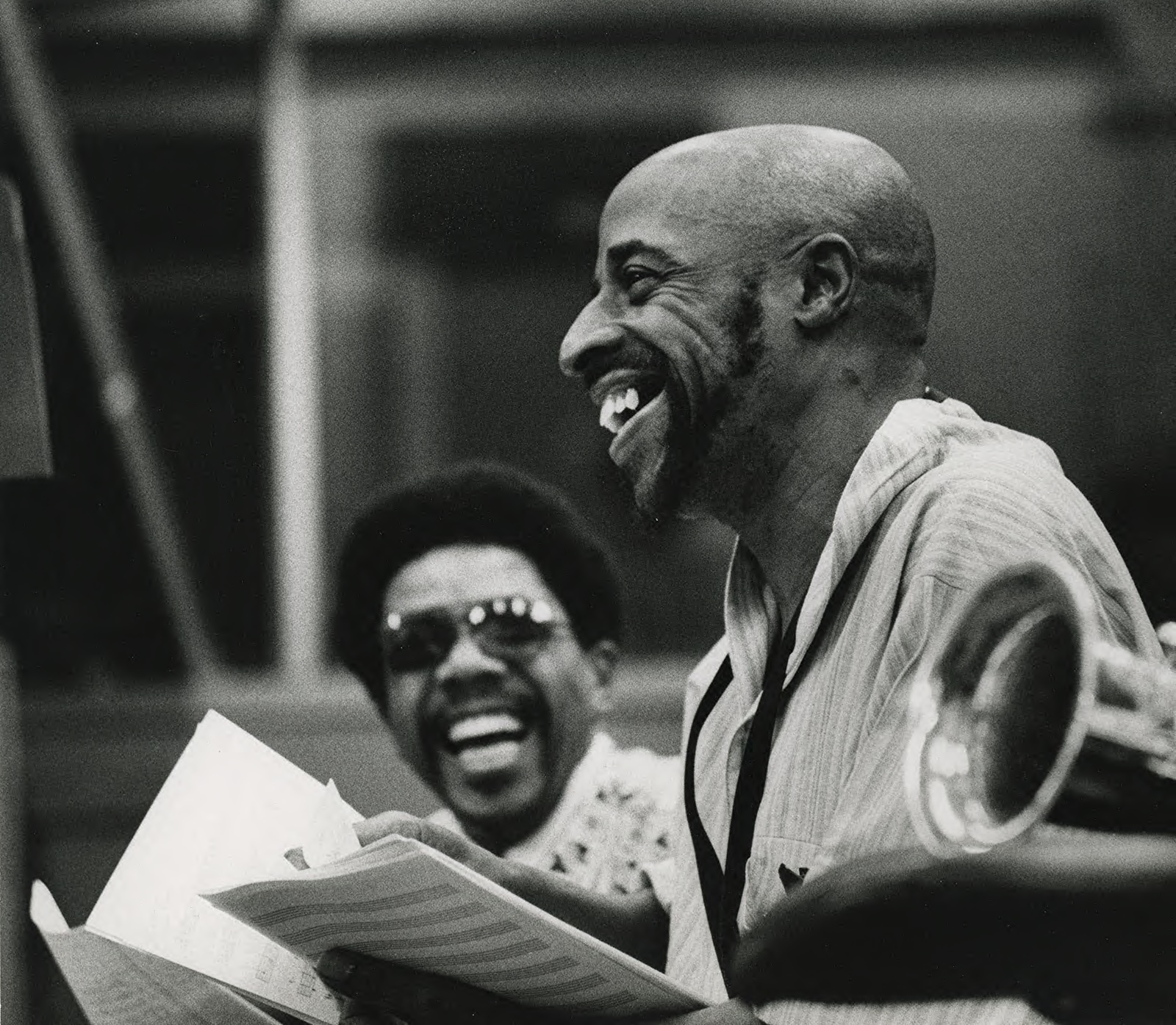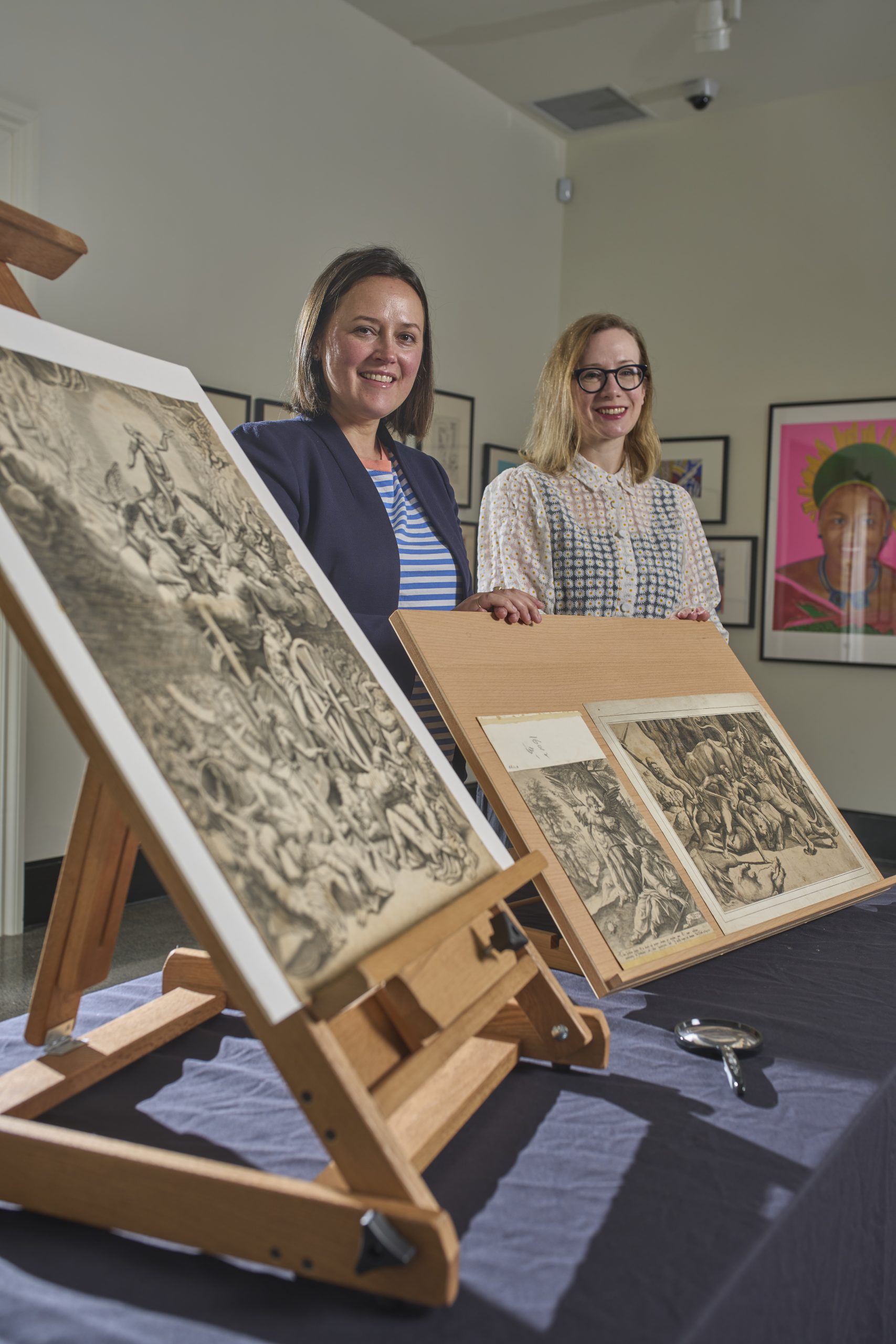By Bonnie Arant Ertelt
On a pleasant October evening, six young musicians warm up on their instruments at Rudy’s Jazz Room.
The club is in Nashville’s Gulch–a part of town that was an industrial hub. Once home mostly to train tracks, now it is an upscale downtown neighborhood. On a small stage in an old stone and brick building, red filters on the spots give a genial glow to the sextet known as the Blue Note as they start to play their tune. The piano, bass, guitar and drums set the rhythm before a horn’s tone pierces the air with an improvised solo.
This group is the top student jazz combo from Vanderbilt Blair School of Music. Rudy’s has raised Nashville’s profile as a place to hear great jazz, but it’s not alone in its efforts, as Blair’s Blue Note sextet shows. All a person needs to do to find great jazz on a regular basis in Nashville is travel down the road a mile to Blakemore Avenue on the Vanderbilt University campus.

CONNECTIONS, COLLECTIONS & AWARDS
Even before Blair offered a major in jazz studies—a major available only since 2020—the Blair Big Band was winning national awards (eight so far and five others for individual students in the program) from DownBeat, a publication that has covered jazz in America since 1934. In fact, Vanderbilt’s jazz program is one of only four featured in DownBeat’s October 2024 Education Guide article “The Jazz School Life.” In 2023, the Blair Big Band was one of four finalists at the Jack Rudin Jazz Championship at Lincoln Center in New York—and was the only ensemble made up entirely of undergraduates. In May 2024, the International Society of Jazz Arrangers and Composers met at Blair, hosting musicians from all over the world. Over the past 11 years, Ryan Middagh, assistant professor and Blair’s director of jazz studies, has assembled a top-notch faculty and developed curriculum to set a high standard for the jazz program.
WATCH the Blair Big Band perform Dizzy Gillespie’s “Things to Come” at the 2023 Jack Rudin Jazz Championship at Lincoln Center.
Vanderbilt has also become a major center for research in jazz history. Numerous prestigious collections have come to the Jean and Alexander Heard Libraries as the result of a five-year partnership between Vanderbilt and the National Museum of African American Music in Nashville, including the John Birks “Dizzy” Gillespie Collection, the Yusef A. Lateef Collection and several photo collections that include portraits by Carl Van Vechten and Charles Stewart. Most recently, the Phil Schaap Jazz Collection, from self-described “jazz activist” Schaap and his longtime partner, Susan Shaffer, was donated to Vanderbilt.
“What we really strive to be is a place where we find an opportunity for anyone who wants to make music a part of their undergraduate experience.”

Schaap, who died in 2021, was recognized as a Jazz Master by the National Endowment for the Arts for more than 50 years of jazz programming on WKCR, Columbia University’s student-run radio station. He also was a curator at Jazz at Lincoln Center who taught at Columbia, Princeton and Juilliard and won Grammys for producing and remastering works by Billie Holliday, Louis Armstrong, and Miles Davis and Gil Evans. With so many prestigious universities in his past, why did Schaap pick Vanderbilt to receive his extensive collection?
“One of Phil’s justifications for giving his collection to Vanderbilt was because of our pedagogy,” Middagh says. “He was a firm believer in replenishing the bandstand and training musicians, but he also believed it was incredibly important to train people to love and understand jazz. We currently have 16 jazz majors, but we welcome everyone. We have classical music majors and people who don’t major in music at all who participate in the jazz program.
“What we really strive to be,” Middagh says, “is a place where we find an opportunity for anyone who wants to make music a part of their undergraduate experience.”
FUNDAMENTALS & FLEXIBILITY
Vanderbilt’s music program is unlike many conservatories and universities in that Blair is an undergraduate music school set within a top-tier research university. Blair students are encouraged to pursue second majors or minors in other musical genres or in academic subjects in other undergraduate schools at Vanderbilt.
“The undergraduate experience is such a time of self-discovery,” Middagh says. “We have flexibility and many pathways while addressing the fundamentals of playing music, and our undergraduate-only model is one of our strengths. Our students get to study directly with the faculty. If you come here and you’re a jazz saxophone major, you’re studying with Jeff Coffin. Here’s the deep end. Go right in.”

BLAIR’S JEFF COFFIN INDUCTED INTO ROCK HALL OF FAME
The Dave Matthews Band, whose members include Jeff Coffin of the Blair School of Music jazz faculty, was a 2024 inductee into the Rock & Roll Hall of Fame. A saxophonist, composer and educator, Coffin is a three-time Grammy Award winner as a member of Bela Fleck and the Flecktones and joined the Dave Matthews Band in 2009. He was appointed to the Blair faculty in 2015.
Read more about Coffin’s passion for collaboration and his zeal for music, life and harmony.
Coffin, adjunct instructor of jazz saxophone, and Middagh have worked together for many years in the studio, on the stage and in the classroom. Coffin was recently inducted into the Rock & Roll Hall of Fame as a member of the Dave Matthews Band. Despite his rigorous touring schedule, Coffin has taught at Blair for 10 years and has given music clinics and master classes all around the world.
“I love teaching,” Coffin says, “I drive home the importance of fundamentals—transcribing, learning blues arpeggios in all 12 keys, learning scales. The most difficult thing for them is playing in unfamiliar keys. It’s the most difficult thing for any musician. I show them the practical application of the information I give them in how to unlock improvisation.”
A MUSICAL TOOLBOX
On that October night at Rudy’s, college peers were in the audience to hear Blair’s two top jazz small ensembles play. It seemed fitting that a Louis Armstrong poster was overlooking the stage. When asked to define jazz, Armstrong once said, “if you have to ask, you’ll never know.” These Vanderbilt students defined it with syncopation, rhythm, improvisation and a confidence in performing beyond their years.
“The skill set that we teach in jazz carries over to a lot of the work professional musicians use in the studio and in live gigs,” Middagh says. “We try to throw a broad musical spectrum at the students so when they’re presented with a musical challenge, it’s not foreign to them. They have the right tools in their musical toolbox to tackle it.”
It’s one of the reasons Middagh takes students into Nashville recording studios. “By the time they graduate, they know the etiquette, they know the process, and they do it as a student in a safe place. If you have a bad studio session as a pro, you don’t get called again. I want them to get all their bad days out as students.”
Blair’s jazz program also builds community. At a weekly event called Jazz Forum, all the students in Blair’s five jazz combos play for each other and provide feedback. On this particular night in October, they took Jazz Forum to Rudy’s, where the audience was not just other music students supporting their peers, but also some of the top-call studio musicians in town.

Charlie Schmitt, the trumpet player in the Blue Note combo, came to Blair to study classical trumpet with Jose Sibaja, associate professor of trumpet. Sibaja plays and teaches classical and jazz with equal proficiency. In December he was a featured soloist at the Kennedy Center Honors in celebration of jazz trumpeter Arturo Sandoval. Schmitt, like his mentor, plays a wide variety of music. At Blair, he’s a member of the Vanderbilt University Orchestra, Vanderbilt Wind Ensemble, the trumpet ensemble and the Blair Big Band, as well as the Blue Note combo.
“Playing in all these ensembles keeps me well-rounded,” Schmitt says. “Jazz has been a crucial part of my time at Blair. It has opened me up to so many other worlds of music that make commercial work and community engagement a lot easier.”
Off campus, Schmitt plays in a funk band called Girls Night and in a country swing band called The Shirt Tuckers with classmate Seth Hahn. Hahn studies trombone performance with Jeremy Wilson, professor of music, who spent five years playing trombone with the Vienna Philharmonic Orchestra and the Vienna State Opera. Wilson also plays with the Ryan Middagh Jazz Orchestra.
“Playing shows like [the ones at Rudy’s], and other off-campus combo performances, has shown me that my work here has been resistance training,” Hahn says. “It makes doing things out in the real world much easier and accessible.”
A testament to Blair’s curriculum providing readiness for stage and studio success is evident in the alumni who have jumped straight from the program into making a living with music. Jonathan Salcedo, BMus’23, now works as a session musician in Nashville recording studios, and he tours with live shows—most recently a Christmas tour with country musician Brett Eldridge.
WATCH the Blair Big Band play Jonathan Salcedo’s “Push and Pull” at the 2023 Jack Rudin Jazz Championship at Lincoln Center. Salcedo was a senior at the time of the competition and now makes his living as a session musician in Nashville.

“I was always interested in playing every kind of music, whether it was classical, jazz, pop, Latin—whatever you put in front of me,” Salcedo says. “At Blair, I was allowed to explore all those areas and encouraged by my mentors to dig in and study many different types of music. This helped me find success as a professional, where I’m asked to switch between musical genres on a moment’s notice. Even more, Dr. Middagh’s emphasis on sightreading in the Blair Big Band has helped. Most of the work I do involves sightreading, and doing it incredibly well is crucial to maintain the necessary pace for session work in Nashville.”
Natasha Blaine Goffman, BA’21, a singer-songwriter who records as Natasha Blaine, sang with the Blair Jazz Choir and with the Blair Big Band as an undergraduate.
“Blair prepared me well for an artist career,” Blaine says. “I learned how to work with other musicians, how to rehearse for gigs, memorize new music quickly and communicate ideas with a band. Even though I’m not usually playing jazz these days, the skills I learned through the jazz program are significantly relevant to me.”

ON THE JAZZ MAP WITH SCHAAP
As if the multiple performance awards, top-notch faculty and rigorous curriculum weren’t enough, in late 2022, the Phil Schaap Jazz Collection was delivered to Vanderbilt, joining multiple jazz collections at the Heard Libraries (see sidebar). It is one of the most extensive jazz collections in the world. Jacob Schaub, music cataloguing librarian at the Anne Potter Wilson Music Library, in an October 2024 interview with Jonathan Marx on Nashville’s community radio station WXNA, estimated that there may be 26,000 published recordings in the collection, not counting the reels. He characterized it as “a world of discovery.”
Two 18-wheelers and a van brought the collection to Vanderbilt, where it currently resides at the Heard Libraries’ Special Collections and University Archives storage facility. The collection was donated by Schaap and Shaffer, after talking with representatives of the libraries and Blair by Zoom during the 2020 pandemic. Steven Lewis, a former curator at NMAAM, had worked with Holling Smith-Borne, director of the Wilson Music Library, on the Lateef and Gillespie acquisitions. Lewis was a former student of Schaap’s and introduced him to the team at Vanderbilt. An endowment to support the collection also was included.
“Normally when you get a donation, it doesn’t come with money to support the preservation, housing and digitization of it,” Smith-Borne says. “But they also gave money to support the collection and put us in contact with people who knew Phil and wanted to donate to do things like digitize the historic audio formats.”
LISTEN to Phil Schaap’s April 23, 2012, broadcast of Bird Flight, where he discusses Charlie Parker’s discography, upcoming birthday broadcasts and concludes with a 1952 performance of Charlie Parker and Charles Mingus on bass at the Hi Hat Club in Boston.
So far, more than 1,000 reel-to-reel tapes have been sent for digitization; many are already available through a platform called Aviary.
“We’re training the next generation of musicians at Blair, but we also want to train the next generation of people who appreciate the music and who will advocate for jazz. We’re training the next generation of listeners.”
“People can start listening to these digitized reel-to-reels right away, because they also assigned copyright to us,” Smith-Borne adds. “When they gave the collection to us, they gave us the rights to be able to share it with anybody.”
Courses on jazz history and journalism based around the Schaap collection are being considered, and work was done last summer for a special collections room that could be developed into a listening room for the jazz collections—especially the Schaap collection. The library is working to raise funds for a place where the community can hear jazz and engage with the many materials and music resources.
“They say I’m a history teacher,” Schaap said in a video interview with the NEA after he was named a Jazz Master. “I teach listening.” It’s not hard to see why Schaap picked Vanderbilt as the best place for his collection.
“We need creative people on the bandstand and in the studios,” Middagh says, “but we also need creative people in boardrooms, in any line of work. Think about the pandemic, everyone had to pivot. What does a jazz musician know better than anything else? How to improvise.
“We’re training the next generation of musicians at Blair,” Middagh adds, “but we also want to train the next generation of people who appreciate the music and who will advocate for jazz. We’re training the next generation of listeners.”
Read more about jazz at Blair School of Music
- Patrick Kenny, Class of ’25, releases album of original music
- Blair jazz students to perform benefit concert for LA wildfire victims
- Blair faculty and alumni create College Football 25 music soundtrack






